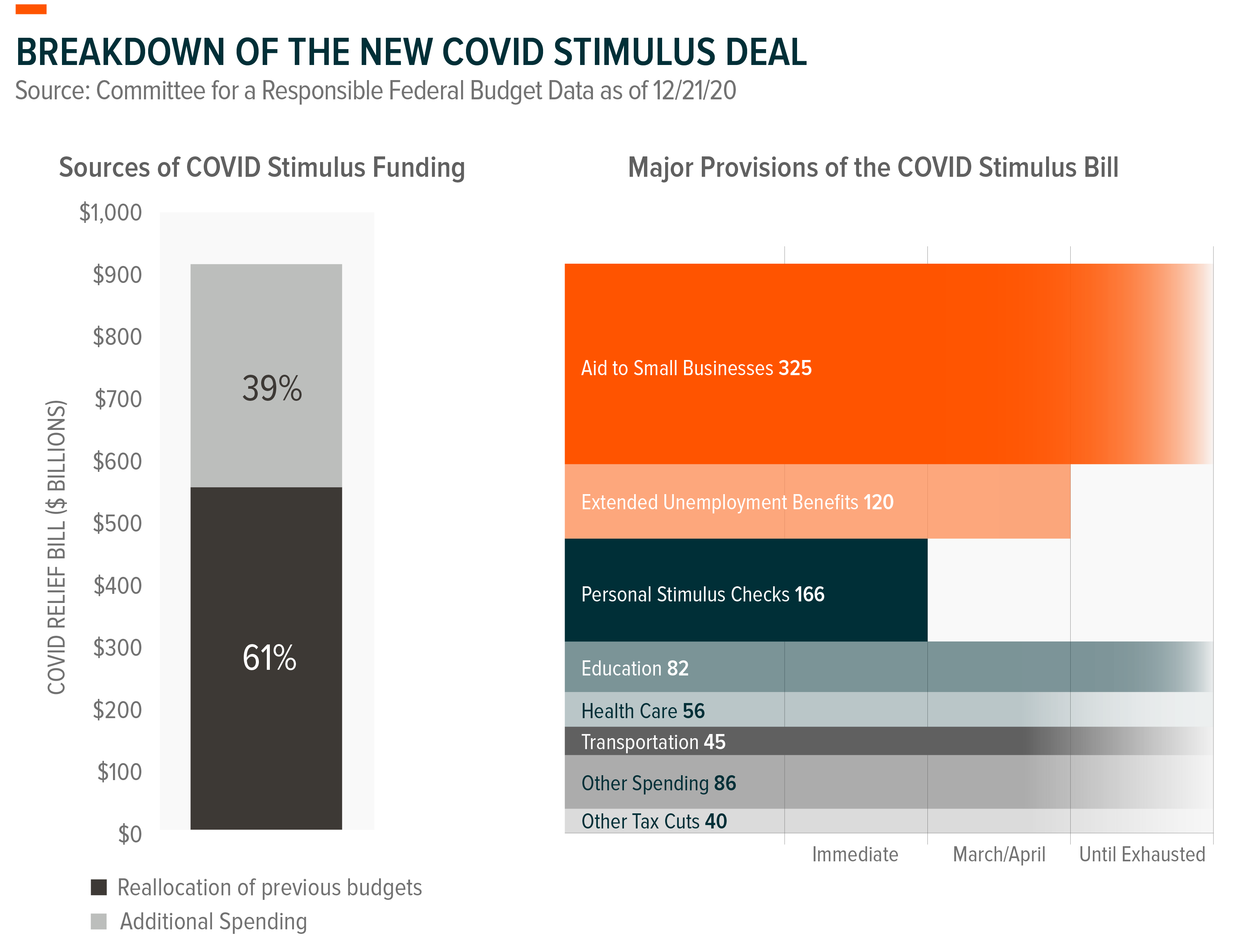Santa may have come a few days early, as Congress passed a new $920 billion COVID relief bill on December 21st. Though unfortunately for many Americans, aid came months too late.
The $2.2 trillion Cares act, the largest spending bill in history at time of signing, was passed back in late March and gave the ailing economy a much-needed shot in the arm. But as the year progressed and support programs burned through funding, it became clear that more stimulus was needed.
Macroeconomic data began showing cracks in late summer. Disposable income has fallen almost 4.28% since July, while broad income growth remains stagnant. This has weighed on consumption with the recovery in retail sales remaining subdued since July while declining 1.1% m/m in November following a slight decline in October. While the employment rate improved from 14.7% in April to 6.7% in November, since July the economy has been adding fewer jobs back each month and initial jobless claims have started to rise.1

The new relief bill allocates $600 of stimulus per person, with a lower income ceiling ($87K vs. $99K of 2019 wages) for payment than the original $1,200 checks.2 Federal enhanced unemployment benefits, which act as direct assistance to those in need, were extended to the tune of $300 for just 11 weeks. While this will aid the unemployed in the short term, the end of March will bring expiration and more hardship. Even the rosiest of vaccine rollout expectations see the beginning of Phase 2 distribution during this March window, targeting essential workers with health complications. With hundreds of millions of Americans still awaiting their doses, the economy will likely need more help to stay on its feet before the necessary 75%-85% inoculation rate is reached.3
The Committee for a Responsible Federal Budget estimates that the bill will boast economic output by ~$615 billion, or 3% of GDP, under their base case scenario. This should be enough to close the output gap expected to persist into 2021. Admittedly, some of that benefit is expected to be seen in 2022 & 2023. Overall, Congress has earmarked $2.7 trillion to date of net COVID relief, of which most has already been spent. 4 The aid has certainty bolstered our economic rebound and this new bill provides a necessary stop gap until the Spring, at which time more assistance will be needed. But with divided government on the horizon, the timing and scale of additional funding remains uncertain.
 Global X Research Team
Global X Research Team